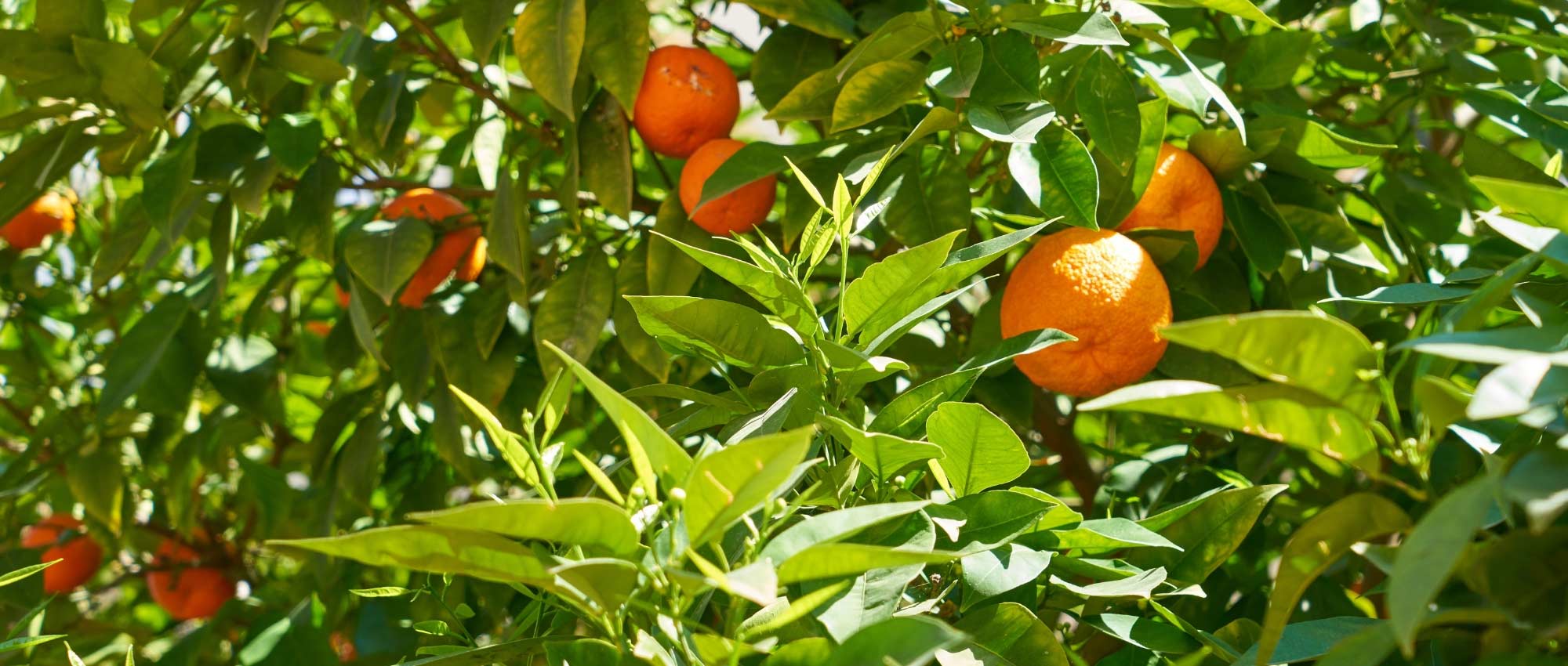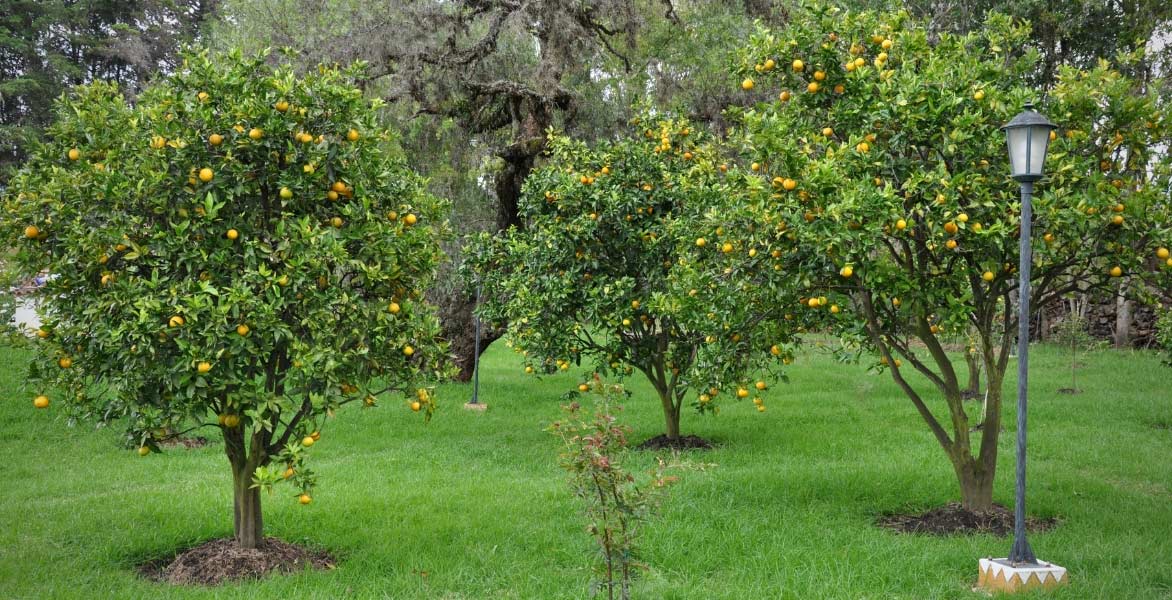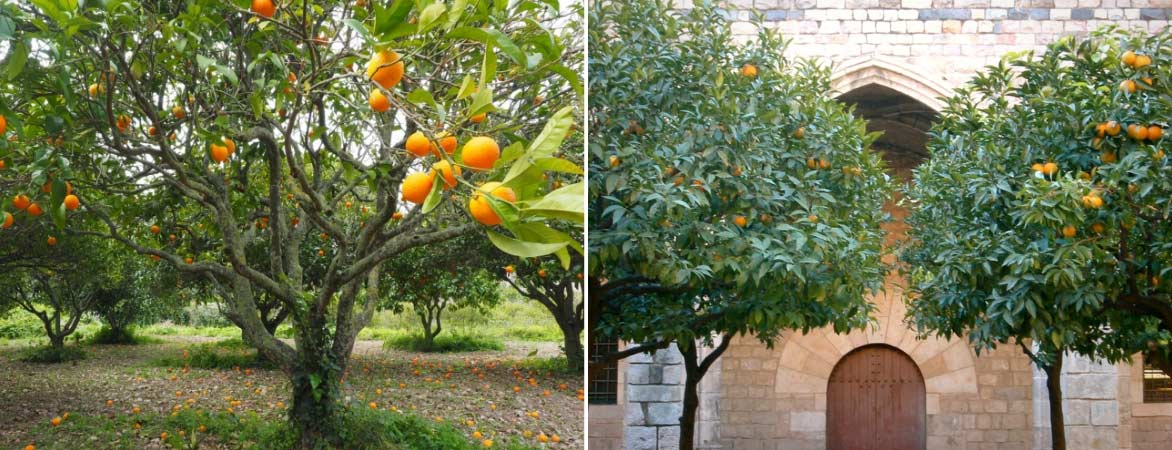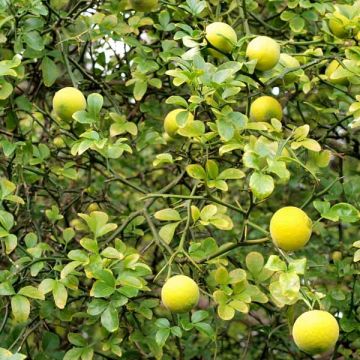
Citrus trees: when and how to prune?
Discover all our tips!
Contents
citrus trees are small fruit trees that evoke southern gardens, the Mediterranean and sunshine… They are valued for their fruit, often yellow or orange, with a tangy flavour. There is great diversity: lemon trees, orange trees, mandarin trees, kumquats, citron trees… To thrive, these citrus trees need pruning from time to time. However, if poorly carried out, pruning can lead to disease, weaken the bush, or damage flowering and fruiting.
Discover all our tips on how and when to prune citrus trees.
Why prune citrus trees?
You might begin by asking why it is necessary to prune citrus trees rather than leave them in their natural shape. There are several reasons why this operation is important. Obviously, it gives the bush an attractive shape. When young, pruning encourages citrus trees to become more ramified, denser and stronger. Moreover, by reducing their size, the bush becomes better suited to small gardens and growing in containers, and by limiting its height, harvest becomes easier. Pruning citrus trees allows air to circulate better between branches and light to penetrate into the centre of the canopy. Similarly, by removing suckers that may grow from the rootstock, you prevent the rootstock from overtaking the grafted variety. Finally, pruning citrus trees also promotes good fruiting.
When to prune citrus trees?
Pruning of citrus trees is carried out after fruiting, in late winter or early spring (between February and April). Thus, lemon trees, orange trees, mandarin trees and others will have time to produce new branches that will carry the next fruits. Above all, avoid pruning citrus trees during frost.
It is preferable to start pruning citrus trees when they are young, after planting. This also depends on type of citrus :
- Pruning clementine trees is carried out annually to structure the branches, limit height and encourage regular fruiting.
- Pruning mandarin trees is performed every one to two years, depending on vigour, to maintain a harmonious habit and improve fruit exposure to sunlight.
- Pruning lemon trees can also be done every one to two years, favouring light cuts that stimulate flowering without weakening the tree.
- Pruning orange trees follows the same schedule (every 1 to 2 years), with spaced but considered interventions aimed at opening up the centre of the tree and controlling its growth.
- Pruning citrus trees in pots should be more frequent than for those in open ground, in order to contain foliage development and avoid exhaustion of confined roots.

Pruning citrus trees gives them a balanced, harmonious habit. Here, lemon trees (photo momentcaptured1)
Discover other Lemon trees
View all →Available in 2 sizes
Available in 1 sizes

Available in 2 sizes
Available in 1 sizes
Available in 2 sizes

Available in 3 sizes

Available in 1 sizes
Available in 3 sizes
Available in 2 sizes
Available in 3 sizes
How to prune a citrus tree?
Some preliminary tips
- Before pruning a citrus tree, it is important to use well‑sharpened, disinfected tools to avoid transmitting diseases from one plant to another. Make clean, neat cuts.
- Always cut either at the base of a branch, flush to the stem, or just above a node (point where leaves attach to stems), because a citrus tree heals and ramifies more easily near nodes. If you cut a branch in the middle, you risk creating a “witches’ broom”, as many shoots will develop below the cut in a disorderly way.
- After pruning a citrus tree, it is advisable to apply wound‑sealing putty to the larger wounds. This will reduce risk of disease or fungal attack.
These precautions are important because citrus trees are susceptible to many diseases. This will help keep plants healthy more easily!
If your citrus tree has a very unbalanced habit, has lost its leaves, or is an old bush, you can regenerate it by pruning very severely in spring. Do not hesitate to cut branches fairly low. It will quickly produce new, more vigorous shoots. Likewise, if your bush has suffered from frost, wait for warmer temperatures then perform a severe pruning to remove all dead parts affected by frost.
Formative pruning of citrus trees
In the first years, when the citrus tree is still young, aim to give it its overall silhouette by carrying out formative pruning. For example, you can prune a citrus tree as a standard, removing the lowest lateral branches to form a straight, unramified trunk, and keeping a few scaffold branches at the top that will ramify and create a bushy effect. You can also prune the citrus tree into a low sphere so that it is ramified fairly low down.
- First, step back a little to visualise the overall shape of the bush and the shape you want to obtain.
- Remove suckers (vertical, very vigorous shoots) that grow below the graft union.
- Start pruning by removing some large branches from the interior, then work gradually outwards, cutting progressively smaller branches. Remove poorly placed branches and those that cross. Select and keep a few scaffold branches that will give the bush its overall shape.
- Aim for a fairly rounded, bushy shape by removing the longest, disproportionate branches. You can remove between 1/4 and 1/5 of the canopy. Ideally reduce height slightly while keeping the same spread and overall volume.
Maintenance and fruiting pruning of citrus trees
Once desired shape has been achieved, in following years perform lighter pruning to maintain a harmonious shape and to encourage fruit production.
- Check for suckers developing below the graft union. If present, remove them (suckers are vigorous shoots that grow quickly and upright).
- Then look at the plant more globally. Identify branches growing in an unbalanced or disproportionate way and remove them if necessary.
- Remove crossing branches and dead, damaged or poorly placed branches.
- Do not hesitate to open up centre of the bush by removing a few branches from inside the branches.
Always cut above a node, or else at the base of a branch, flush to the stem.
To learn more, also read our dedicated article :
- Pruning lemon tree: when and how to prune for a good harvest of lemons?

Depending on how they are grown and pruned, citrus trees can take very different forms: an open, airy habit ramified fairly low down, or a much denser, more compact form borne on a straight, sparsely ramified trunk. Here, orange trees (photos Hans Braxmeier / Jeremy Keith)
- Subscribe!
- Contents







































Comments